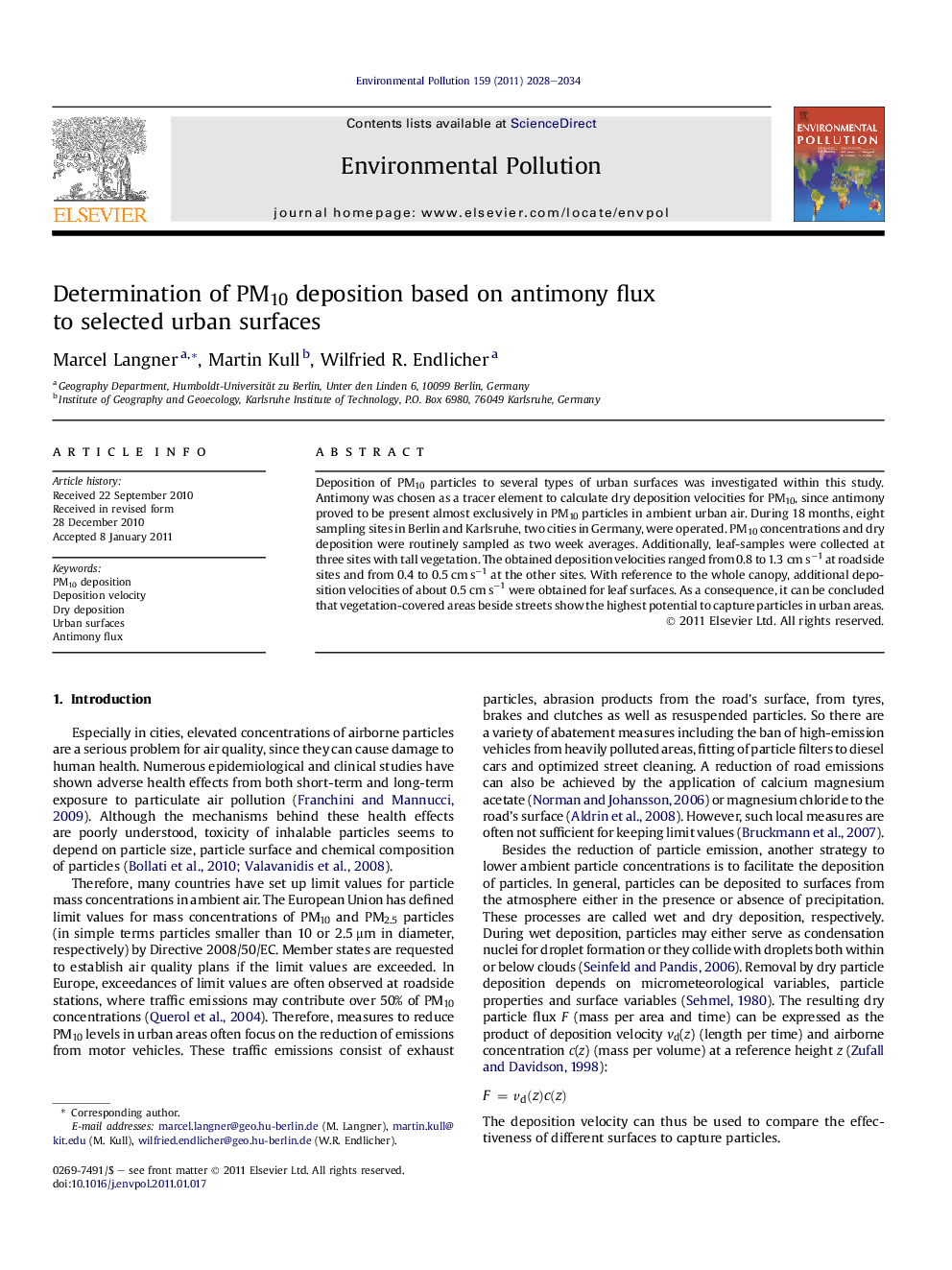| Article ID | Journal | Published Year | Pages | File Type |
|---|---|---|---|---|
| 4425195 | Environmental Pollution | 2011 | 7 Pages |
Deposition of PM10 particles to several types of urban surfaces was investigated within this study. Antimony was chosen as a tracer element to calculate dry deposition velocities for PM10, since antimony proved to be present almost exclusively in PM10 particles in ambient urban air. During 18 months, eight sampling sites in Berlin and Karlsruhe, two cities in Germany, were operated. PM10 concentrations and dry deposition were routinely sampled as two week averages. Additionally, leaf-samples were collected at three sites with tall vegetation. The obtained deposition velocities ranged from 0.8 to 1.3 cm s−1 at roadside sites and from 0.4 to 0.5 cm s−1 at the other sites. With reference to the whole canopy, additional deposition velocities of about 0.5 cm s−1 were obtained for leaf surfaces. As a consequence, it can be concluded that vegetation-covered areas beside streets show the highest potential to capture particles in urban areas.
► Deposition velocities of PM10 were determined using Sb as a tracer element. ► Dry PM10 deposition velocities ranged from 0.8 to 1.3 cm s−1 at roadside sites. ► Dry PM10 deposition velocities ranged from 0.4 to 0.5 cm s−1 at other urban sites. ► Additional deposition velocities of 0.5 cm s−1 were obtained for leaf surfaces.
